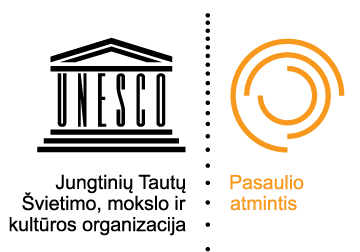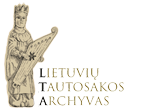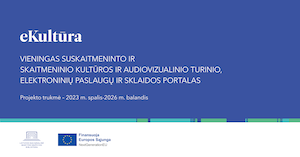The Lithuanian Folklore Archives – are the largest and oldest repository of folklore in Lithuania with abundant audio and photo archives. Since the end of the 20th century, a video archive has also been compiled. The oldest manuscript dates to 1800, and the oldest photograph is from 1907. The first sound recordings were recorded on wax cylinders in 1908, on phonograph discs in 1935, and on magnetic tapes in 1952. The oldest video recording is from 1972.
Collections
Manuscripts (LMD, LTR, VPUTR)
The collection of the Lithuanian Science Society (LMD; 1,269 items), Lithuanian Folklore Archive (LTR; over 8,000 collections; continuously supplemented), Vilnius Pedagogical University Folklore Archive (VPUTR; 995 collections) together amount to over 10,000 collections in which there are over two million items. These include song texts and melodies, stories, tales, and other narrations, proverbs, riddles, spells, beliefs, ethnographic descriptions, among other things. Also preserved are the documents from 1930–1947 of the Folklore Commission and the Commission of Gathering Folk Melodies as well as the Lithuanian Folklore Archive, and personal manuscripts of individual folklore researchers: Margarita Vymerytė, Zenonas Slaviūnas, Antanas Mockus, Kazys Grigas, Jonas Balys, among others.
 |
In 2013 the Folklore Collection of the Lithuanian Science Society (19th – 1st half of the 20th centuries) housed at the Institute of Lithuanian Literature and Folklore and at the Vilnius University Library, were included in the UNESCO "Memory of the World" national register as an object of documentary heritage of national significance (registration No. 55). |
 |
In 2008 the Lithuanian Folk Music Phonogram Collection (1908–1949) housed at the Institute of Lithuanian Literature and Folklore was included into the UNESCO "Memory of the World" national register as an object of documentary heritage of regional significance (registration No. 28). |
Photo Archives (LTRFt)
Around 55,000 photographs and their negatives (collection is continually growing). Safekept here are the photographs of the famous interwar photographer Balys Buračas (around 250 items), glass negatives of the well-known folklorist of the second half of the 20th century, Jurgis Dovydaitis (around 3,000 items), the photographs of the journalist and photographer Ona Pajėdaitė (1,200 items), as well as digital images of expeditions and various folklore events from the start of the 21st century.
Video Archives (LTRV)
Visual recordings comprise over 1,350 hours (and the collection is continually supplemented). The video archive collection was started in 1995 when the Institute acquired a video camera. The first video recordings documented well-known folklore informants (Juozas Averka, Rožė Gimbutienė, Agota Žuraulienė), and folklorists of the older generation (Kazys Grigas, Leonardas Sauka, Kostas Aleksynas). The collection also includes visual materials documented by other individuals such as the analogue recordings done by Virginijus Kašinskas, Adolfas Gedvilas, Valdas Striužas and digital video recordings by Vykintas Vaitkevičius as well as other collectors. In 2015 the Archives received the digital archive of Rimantas Sliužinskas for safekeeping.





